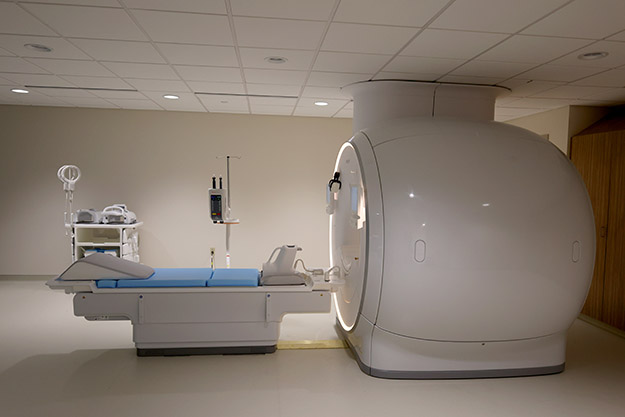HUNTSVILLE, Ala.- The Army is prioritizing People First by improving the Army's culture and quality of life, including upgrades in housing, barracks, childcare, and spouse employment.
However, healthcare may be one of the most important aspects to warfighters readiness and the U.S. Army Engineering and Support Center's (Huntsville Center) Medical Division is at the forefront of ensuring warfighters and their families are receiving the top care they deserve.
Huntsville Center's MRR program provides support with project management, construction, engineering, contracting, and Architect-Engineer (A&E) design services, to multiple Department of Defense (DoD) agencies, at various locations nationwide.
By offering a fast track, efficient method for design and execution of all types of medical facility repairs, renovations, conversions, alterations, additions (within statutory limits), and construction projects medical facility renewal work can be accomplished in a timely and cost-effective manner.
Last year, the Medical Division's Medical Repair and Renewal (MRR) program began a $25 million project to design and renovate the Radiology Department (RD) at Joint Base Lewis-McChord (JBLM) Madigan Army Medical Center (MAMC).
As the Army's second largest medical treatment facility, the state-of-the-art and technologically advanced MAMC is one of only two designated Level II trauma centers in Army Medicine and one of four military hospitals in the state of Washington.
The project provides upgrades to space and equipment used for Magnetic Resonance Imaging (MRI), Breast Imaging, Ultrasound, General Radiographic, Fluoroscopy and Computed Tomography (CT Scan) sections of the Radiology Department.
Ronald Johnson, MRR project manager, said there were multiple design iterations based on Defense Health Agency design standards and end user requests.
"Since contract award, we overcame every challenge and this renovated Radiology Department provides an example of a modern, well designed and constructed department in terms of patient care, layout, and patient and staff--friendly environment," Johnson said.
Andrew Gross, MRR contracting officer for the project, said the key to the project's success is MRR's innovative use of Indefinite Delivery/Indefinite Quantity (IDIQ) contracts
"We have Design-Build (D-B) Construction (CONUS only) IDIQ contracts in place to rapidly execute our customer's requirements," he said.
Gross said MRR also has direct access to a suite of medical Architect-Engineer (A-E) contracts (CONUS and OCONUS) managed by the Huntsville Center's Engineering Directorate to help meet the various design and study needs of our clients.
"These contracts, and how we use them, offer many benefits and advantages to our multiple Department of Defense (DoD) service customers," he said.
Upgrading equipment for the RD was a highly complex aspect of the project, Johnson said.
However, he said it's not solely about replacing equipment since MRR contractors can execute work across the vast spectrum of construction services within an active medical facility.
"From simply replacing ceiling tiles in an administrative non-patient area, to a phased demolition and construction renewal modernization of a multiple suites while maintaining patient services throughout the renewal, we can get it done,"
Johnson said he's extremely pleased with the Phase 1 renovations to the Radiology MRI patient reception, check-in, and recovery areas, and additionally, the physician and staff offices and Radiologist's reading rooms.
"It is known within the medical profession that radiologists have an unusually short career span due to eye-strain and intense concentration," he said. "The modern design of the Department's reading rooms is a step forward using lessons learned in how to reduce eye-strain and distractors by providing the right colors, lighting, back-lighting, and sound reducing materials to reduce distractions."
Jeff Paradee, MAMC Facility Management Division deputy chief, , said renovation of an active, functioning medical facility would not be possible without the coordination and oversight from a team of dedicated professionals within MAMC itself.
"In addition to the technical equipment experts from the Radiology Department there is also a group representing the MAMC Facilities Maintenance Department that coordinate all forms of activities to keep the project moving forward and meeting the Hospital Safety and Infection Control standards," Paradee said.





Read Comments